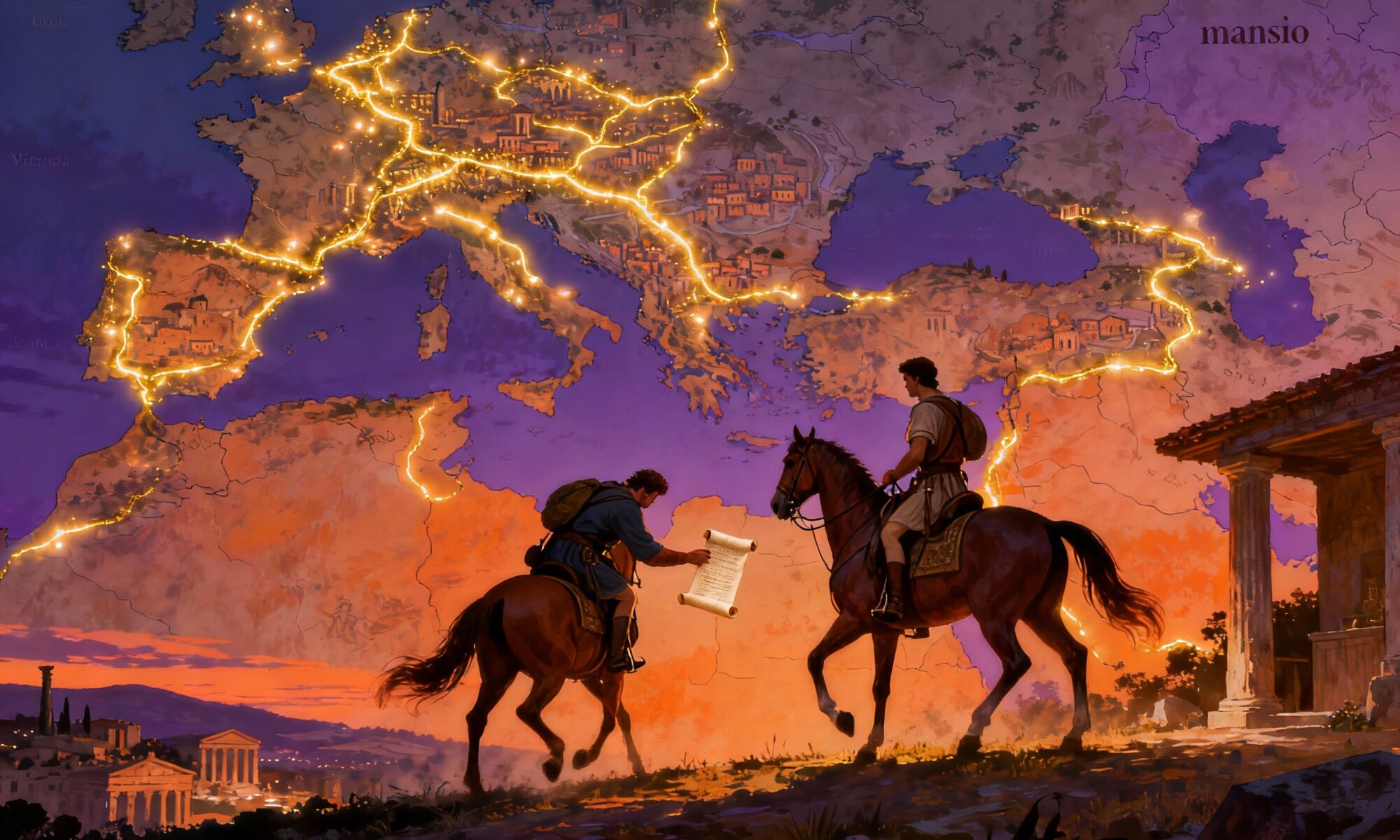Established by the first Roman Emperor, Augustus, around 20 BCE, the Cursus Publicus (literally “the public way” or “state-run course”) was far more than a simple mail service. It was the nervous system of the Roman Empire, a state-funded and state-controlled transportation network designed to carry official correspondence, government officials, and tax revenues with unprecedented speed and reliability.
The Engine of Imperial Administration
Before Augustus, communication was a haphazard affair. Wealthy senators and generals like Julius Caesar used private relays of messengers, but there was no unified system. As the Republic transformed into a vast Empire, this ad-hoc approach was no longer sustainable. Augustus recognized that to govern millions of people across three continents, he needed a way to exert central control, move troops, and receive intelligence reports efficiently.
The Cursus Publicus was his solution. Its primary purpose was to serve the state. It was not a public postal service for private letters from Uncle Claudius to his nephew in Alexandria. Use of the system was a privilege strictly reserved for those on official imperial business, creating a clear distinction between the machinery of government and the lives of ordinary people.
How It Worked: Stations, Horses, and Oxen
The genius of the Cursus Publicus lay in its infrastructure, which was built upon Rome’s legendary network of roads. The system was divided into two distinct branches:
- Cursus Velox (The Fast Course): This was the express service, the ancient equivalent of an encrypted email. It used light carriages (cisia) or horse-riders to carry urgent dispatches. The key was a relay system. Along major roads, small stations called mutationes were established every 10 to 15 Roman miles. Here, a messenger could swap his exhausted horse for a fresh one and continue his journey with minimal delay. With this system, a single message could travel continuously day and night, passed from one rider to the next.
- Cursus Clabularis (The Heavy Course): This was the freight service. It utilized sturdy, slow-moving wagons (angariae) drawn by oxen or mules. This branch was responsible for transporting bulk goods like military equipment, building materials for state projects, and, most importantly, tax payments in the form of grain, gold, and other resources.
To support these services, larger, more developed facilities called mansiones were built at the end of a typical day’s journey (around 25-30 miles apart). A mansio was a full-service inn complex run by a government contractor. It offered lodging, food, stables, and a blacksmith, ensuring that both man and beast were ready for the next day’s travel. These stations became crucial nodes of communication and administration throughout the empire.
The Diploma: Your Golden Ticket
How did a station master know who was authorized to demand fresh horses, a meal, and a bed for the night? Access was controlled by a special bronze warrant known as a diploma.
This passport was issued by the Emperor himself or by his provincial governors. It specified the traveler’s route, the duration of their travel rights, and precisely what they were entitled to requisition. A diploma was a symbol of immense authority. The temptation to abuse this privilege was constant. We have letters from figures like Pliny the Younger, then a governor, writing to Emperor Trajan to request a diploma for his wife so she could travel quickly to visit her grieving aunt. This seemingly minor request shows just how tightly controlled the system was—even a high-ranking official couldn’t simply use it for personal reasons without direct imperial consent.
The Speed of Empire
So, just how fast was this info highway? While not instantaneous, it was astonishingly quick for the pre-industrial world. Under normal conditions, a messenger on the Cursus Velox could reliably cover about 50 miles per day. In a crisis, however, that speed could be tripled. By using continuous relays of riders, a truly urgent dispatch could travel up to 150 miles in 24 hours.
Consider this: a message sent from Rome could reach northern Gaul in about nine days and Roman Britain in under two weeks. News of an emperor’s death or a major military victory could ripple across the empire in a matter of weeks, rather than a matter of months. This speed allowed Rome to react to rebellions and invasions in a way no previous empire could have dreamed of.
The Burden on the Provincials
This incredible efficiency came at a high cost, and it was a cost not primarily borne by the central treasury. The system operated on a principle of forced requisition known as angareia. Local communities located along the routes of the Cursus Publicus were legally obligated to provide the animals, fodder, and provisions required by diploma-holders.
This was an immense and often ruinous burden. A farmer could have his best oxen or mules requisitioned at a moment’s notice, disrupting his harvest. The demands could be so great that they led to official complaints and even local unrest. While emperors like Hadrian attempted to reform the system and shift more costs to the imperial government, the fundamental burden on the provinces remained a persistent feature—and grievance—of Roman rule.
The End of the Road
The Cursus Publicus was a direct reflection of the power and cohesion of the Roman state. As the Western Roman Empire began to fragment in the 4th and 5th centuries CE, so too did this magnificent network. Roads fell into disrepair, stations were abandoned, and central authority collapsed. The loss of this rapid communication system was both a cause and a symptom of the “Dark Ages” that followed, where long-distance travel and governance became dangerous and slow once more.
The Cursus Publicus stands as a testament to Roman engineering, bureaucracy, and ambition. It was the invisible framework that held a vast and diverse empire together for centuries, proving that long before fiber optics and satellites, the key to power was controlling the flow of information.
